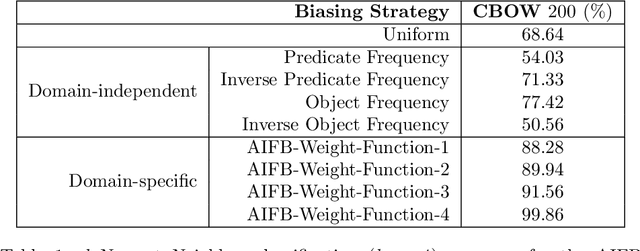Graph Node Embeddings using Domain-Aware Biased Random Walks
Paper and Code
Aug 08, 2019



The recent proliferation of publicly available graph-structured data has sparked an interest in machine learning algorithms for graph data. Since most traditional machine learning algorithms assume data to be tabular, embedding algorithms for mapping graph data to real-valued vector spaces has become an active area of research. Existing graph embedding approaches are based purely on structural information and ignore any semantic information from the underlying domain. In this paper, we demonstrate that semantic information can play a useful role in computing graph embeddings. Specifically, we present a framework for devising embedding strategies aware of domain-specific interpretations of graph nodes and edges, and use knowledge of downstream machine learning tasks to identify relevant graph substructures. Using two real-life domains, we show that our framework yields embeddings that are simple to implement and yet achieve equal or greater accuracy in machine learning tasks compared to domain independent approaches.
 Add to Chrome
Add to Chrome Add to Firefox
Add to Firefox Add to Edge
Add to Edge